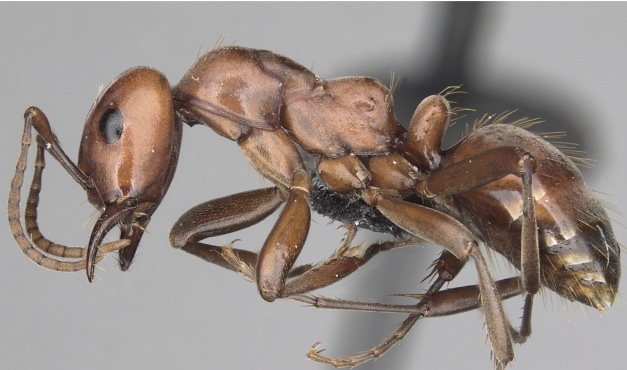5 New Species of 'Slavemaker' Ants Discovered

If you want to get the job done, get somebody else to do it. That seems to be the motto of "slavemaker" ants, which raid the nests of other ants and steal their young. The kidnapped ants then do most of the work excavating a nest, finding food, and caring for the kidnapper queen and her offspring.
Though scientists have studied these roguish ants for more than 200 years, until last week, the consensus held there were only five species. But a new analysis published in the journal Zootaxa has uncovered another five previously unnamed species. The research shows that the genus Polyergus, the taxonomic grouping above species to which these parasitic ants belong, contains more species diversity than previously thought.
The study also reinstated four old species that previously had been described as unique, but then wrongly lumped together as one, said study author James Trager, a biologist and naturalist at Shaw Nature Reserve in the St. Louis area. Trager found one of these new-to-science species, Polyergus mexicanus, in his backyard. [See Stunning Photos of Ants of the World]
Often, these dastardly raiders take multiple species of ants, so that their colonies teem with a multihued pallet of ant life. "The red and the brown, the red and yellow — they are running around together in the same colony," Trager told LiveScience.
Trager worked on the analysis intermittently for a decade, collecting many of the insects himself and examining ant specimens from collections around the world. To distinguish between the different species, he looked at anatomy, geography, behavior and other traits, expanding the Polyergus genus to include 14 species. "I studied them quite carefully — I did a lot of measurements and literally counted hairs," Trager said.
"Patience and attention to detail lend James [Trager's] works particular longevity," entomologist Alex Wild, who wasn't involved in the study, wrote on his blog Myrmecos. "This new revision fits the mold, so I expect it will be the standard reference for identifying Polyergus to species for the next decade and beyond."
In his post, Wild also writes that the terms "slavemaker" or "slave-raider" have become controversial, because the former terms bring to mind human slavery, and making the subject "unduly difficult" to communicate about to the general public. He suggests using the term "kidnapper ant" instead. Trager said that he's OK with using the term "kidnapper" when communicating amongst nonscientists, but said the "slavemaker" term is already so well-established in the scientific literature that it would be impossible to totally do away with.
Get the world’s most fascinating discoveries delivered straight to your inbox.
Among Trager's interesting findings were that the original "reference collection" for Polyergus breviceps, the widely distributed North American slave-raider ant — used as the standard for identifying other ants — actually comprises three separate species.
Most of Polyergus ants conduct their raids on warm summer afternoons, and they can be exciting to watch. Sometimes the invaded ants put up a fight, while other times, they don't appear to resist the onslaught, according to the study.
Email Douglas Main or follow him on Twitter or Google+. Follow us @livescience, Facebookor Google+. Article originally on LiveScience.



